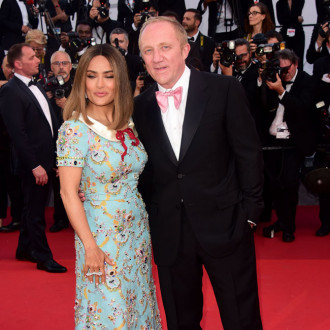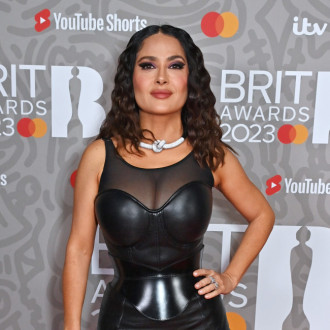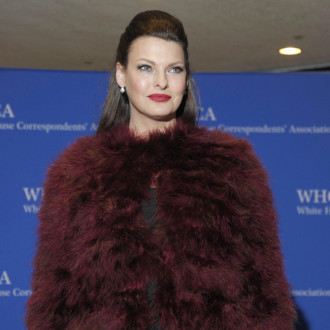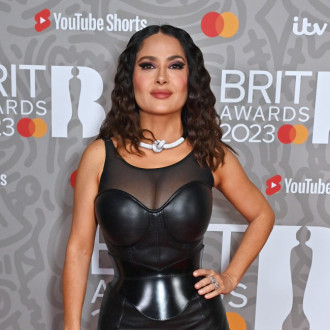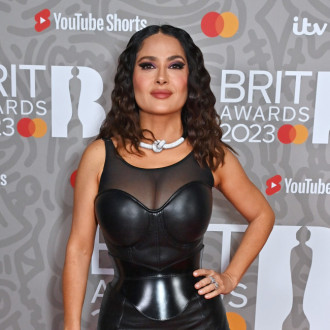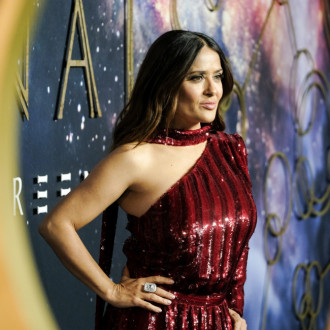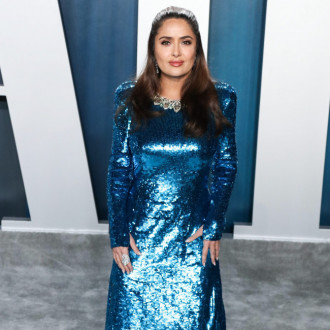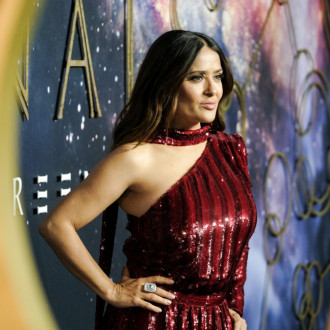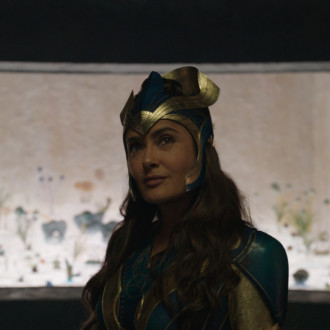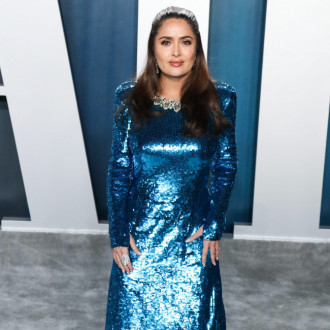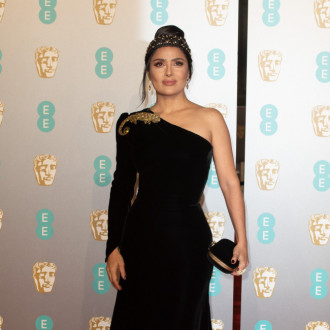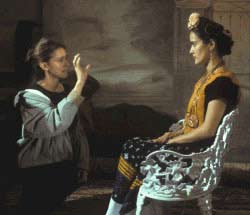
Salma Hayek Interview
07 January 2009Star/producer Salma Hayek still enthusiastic about getting to play her heroine, painter Frida Kahlo
(Some questions in this interview have come from other journalists present for the Q&A.)
A writer ends up using a lot of italics when transcribing an interview with Salma Hayek, but there's no way that simply slanting a few letters can do justice to the impassioned hand gesturing and accentuated eye rolling that goes on when this sultry, sprightly sharp cookie gets fired up about "Frida."
Her pet project for the last seven years, the film is a heartfelt and visually exhilarating biography about Mexican portrait surrealist Frida Kahlo (recognizable from her many self-portraits that emphasize her bushy mono-brow) and the stormy but life-long love she shared with her husband, controversial mural painter Diego Rivera (Alfred Molina).
Hayek plays Kahlo, her role model and personal hero, in the film, which depicts with amazing clarity how her suffering --physically from crippling damage done to her body in a bus crash as a teenager, and emotionally due to the tumultuous nature of her marriage -- gave birth to her famously colorful, often cathartic and severe painting style.
In the film that style is brought to life through the stunning visual imagery of director Julie Taymor ("Titus"), who as a narrative technique recreates in live-action some of Kahlo's paintings.
Near the end of a long, harried journey with the film as star and producer, Hayek (best known for sexy can-hold-her-own damsel roles in "Desperado" and "Wild Wild West") nonetheless looks like a million bucks. The 5'2" 36-year-old (who could easily pass for 25) has perfectly ironed hair (which she brushes back occasionally when not gesturing emphatically) and is wearing a triple strand of pearls, a snug cotton button-up-style blouse that doesn't appear to have any actual buttons (and is therefore quite revealing), a white skirt that is tighter still, and knee-high tan boots. But she also comes across so determined and intelligent that even her stunning good looks aren't distracting when she sits down with a small group of journalists to speak about "Frida" the movie and Frida the woman during a recent stay in San Francisco.
Just remember, whenever you see italics, you'll have to use your imagination and picture Hayek's rolling hand movements and serious but animated eyes.
| Q: To say the least, Frida Kahlo lived an unconventional life with enough experiences for several lifetimes. Did you worry that making just one movie about her whole life would omit some parts of her or not give it the depth it was due? |
A: I did for some years, and then I just surrendered to the knowledge that to make a good movie, you can't try to tell it all. It's stupid. It takes a lifetime to tell a life's story. You have to find the spine of the movie, what the story is about. You cannot say, "It's about Frida Kahlo," because then you make a bad movie. You make a bad biography. I used to think a lot about "Amadeus." Yes, it's about Mozart. But it's about envy, and that's what makes it a good movie. These people lead epic lives, but you have to find a human quality about them that is so simple that we can all relate to it.
| Q: So in this film it is loyalty and devotion? |
A: To me it's unconditional love and endurance.
| Q: Was there any part of her life left out of the film that you wish you could have included? |
A: Well, most of her life is included in the film. But we definitely don't go through all of the illnesses, the where and how -- and thank God, because I don't think it would have made a good movie.
| Q: It would have been a disease-of-the-week movie. |
A: Yeah! It's what she did with it that makes her interesting. And we don't go into detail with all the love affairs, and there were many. She had love affairs that were meaningful with men and women. But Diego was the love of her life. That was never questioned. And politically -- we really don't explore that to death because this is a love story. You have to be focused on the story you want to tell, or you get a bad movie.
| Q: Most audiences are familiar with your films like "Desperado" and "From Dusk To Dawn," in which you had racier, sex-symbol roles. There's a lot of sensuality in this film, but you're not a sex symbol in this role. |
A: And I'll tell you, there's nudity in this film, but I felt a lot more naked and embarrassed wearing that stupid costume from "Wild Wild West"! I would have to push myself out of the trailer every day! I cannot tell you how mortifying that was compared to being completely naked, in bed with another woman, because in this particular circumstance it's very organic to the story I'm telling -- and incredibly important for really telling you who this woman was. So it makes you feel less naked because it's not gratuitous. It's not exploitive. Otherwise I would have been betraying the character. You have to embrace the character for everything that she was, without any judgement, and throw yourself completely, completely into it.
| Q: Kahlo led a very full life, but it also wasn't a very happy life. Do you think great artists have to suffer? |
A: [Thinks for a moment] I disagree with you. I disagree with you that because she suffered it was an unhappy life. It was a short life, but she squeezed all the juice out of that life! I don't see her as a victim. She made the best out of her suffering. She made the best out of all these horrible circumstances. From pain, she creates art and poetry. Her husband was very unfaithful, which was painful for her, especially in the beginning because she thought she was going to change him. But instead she grows from it and she finds freedom out of it. A lot of people want to see Frida as a victim, but I refuse. A victim, when this happens, they go to the bedroom and they cry all day. Frida gets up, has a love affair with another man, then with another woman, then steals a woman from her husband! Does that sound like a victim to you?
| Q: And she does something with the pain. |
A: Art and poetry! She had a sense of humor. It was dark.
| Q: In most movies about artists, you don't get a sense of... |
A: ...of why!
| Q: Yes. Of what drove the person's creativity. In this movie, you do. I'd like to know what the key to taking the audience inside her creative process was for you. |
A: The ability to get inside her brain. I don't know if (our vision of inside her brain) was accurate or inaccurate, (but) it's definitely a point of view, specifically from Julie Taymor, of her parallel vision of the world that was absolutely unique. When people called her a surrealist, she said, "I'm not a surrealist. I paint my reality." She had this parallel reality. (At one point) I thought, God, I'm gonna do a movie about Frida Kahlo in English? Someone had already done a movie about Frida Kahlo in Spanish, and it's pretty good. Why repeat it? But then I realized, Frida Kahlo's first language was not Spanish. It was a visual language. So we needed a director that could make the language of the film's visuals stronger than the words.
| Q: Julie Taymor was definitely the right person for something like that. |
A: And I'll tell you, I knew we had to make it visual, but I had no idea how. She was not convinced about doing the film. I had to go and really sell it to her. Then she came up with (the film's visual language) within an hour of talking to me. She had the vision of this film within an hour. Everything she said in that meeting is what you saw on the screen.
| Q: So landing her to direct was a big piece of the puzzle. |
A: Yeah. I think that's why it took seven years to get the film made.
| Q: Was (finding a director) the hardest thing about this project, which has been a pet project of yours for so long? |
A: The hardest thing was for me to be satisfied with the script. I could have made the film five years ago, maybe six years ago. But I just never felt all the elements were there. I wanted to make a film about Frida Kahlo, but I wanted to make the right film about Frida Kahlo or else not make it at all.
| Q: This seems like it's been your most challenging role to date, especially because you have to play a woman through all her periods of life. And not only that, but you're going through the prosthetics, the body cast, that wonderful eyebrow and moustache -- so even in terms of makeup it seems like it was challenging. Would you agree? |
A: Honestly? You're gonna think I just want to disagree with everything [laughs]. It is definitely the most complex character I've ever played and maybe the most complex character I will ever play. But it was not the most challenging one because when you are so passionate about something, and when you love someone so much, it's easy to feel their pain. But I played a part before that was the most challenging part for me because it confronted me with my biggest phobia -- and that was "From Dusk Till Dawn" [in which she played a sexy vampire stripper who danced with a snake].
| Q: The snake? |
A: [Rolling her eyes] You have no idea what it was to dance with that snake in a bikini. That's probably the biggest challenge I've ever encountered. "Frida" was a joy. "Frida" was delicious. I couldn't wait every day to get to the set, even though I was exhausted, and have my leg get caught up or lose the baby. To get to play my hero and be able to go these places emotionally? We live for parts like this, you know? This is a dream for an actor. But to have to put on a bikini and dance with a snake 11 feet long and make it organic? I went to the extent that I created a relationship with this snake. In my mind, it had to have a meaning so I could go into a trance. I had to go to hypnosis -- it was months of preparation for that one dance! And for me, it wasn't a dance, it was a ritual. I investigated snakes and I found in some cultures they represent your inner power, so it was a dance with her inner power. I was not just dancing, it had a meaning to me. That was really, really challenging.
| Q: And what about the tango you did (in "Frida") with Ashley Judd (playing photographer and political agitator Tina Moditti)? That was one of the most sensual moments of this movie. |
A: It's funny, that reminded me of when I was a little girl, and I used to get my cousins and choreograph little routines for Christmas parties or something. We didn't have a choreographer for this dance. Julie Ashley, and my friend Mia Maestro who is a fantastic dancer who did a movie called "Tango" and plays my sister in this movie, we got together and played around one morning and came up with the dance. It was a lot of fun.
| Q: I saw Edward Norton on David Letterman the other night talking about how he helped write this... |
A: Oh, he wrote it.
| Q: Although there are four other writers credited... |
A: He has no credit, but that's life. [Actually, it was Writer's Guild protectionism.] Edward Norton wrote nine drafts of this script and was the only writer who worked with Julie Taymor. Julie Taymor doesn't go and do someone else's vision of things. She's very opinionated, very detail oriented and she definitely had a defined vision of what she wanted to make, and Edward Norton executed it. Brilliantly. I'm sure all the other writers are very passionate about what they wrote. It's an 18- or 17-year-old project and some of the people who got the credit were the first writers. I've been working on it for seven years. I worked on 25 drafts. You tell me if you think some of the work done 17 years ago survived on the screen. I personally don't think so. Maybe somebody's gonna sue me, but I think I'm entitled to that opinion.
| Q: I noticed very specific nuances about the way you played Frida, like the way she kisses. She sort of surrenders to the kiss, she lingers in the moment after a kiss. I'm wondering if a detail like that is something you create, or if it's something you just feel, or if that's just the way you kiss. |
A: I saw it in photographs. I have a book -- which was especially feared by the wardrobe department -- I have a book where I have collected every photograph ever printed of Frida Kahlo, and some that have never been printed. It was a challenge because I did it chronologically and some of them contradicted on their dates, others I had the year but not the month. I was obsessed like Sherlock Holmes investigating, studying with a loop (a photographer's magnifier for looking at slides and photo detail) so that I could find objects I knew she didn't get until this month, or earrings she never wore after that year. I was obsessed with it. I learned a lot of things about Frida (from these photos). For example, she only smoked with her left hand, even when she was not painting. She never did the full-on Frida look until about the time (Leon) Trotsky comes. Through this book you can see her journey into finding her own identity.
| Q: I can see why the wardrobe people were afraid of this book! |
A: Sometimes wardrobe would come and say, "For this scene I think this Victorian blouse would be good." I'd say, "No, she never wore Victorian styles after this year" or something. If they'd say they thought she did, they'd get "You go look in that book! You find me one picture!" I would drive them crazy.
But that's where (I saw) how she kissed. She lingered in every moment. She really enjoyed every second she was alive. This movie is about a love affair with life and we chose to tell it through the love affair with Diego.
Contactmusic
Top 10 Videos
Wallace Chung
XXX
1
10 Years
Beautiful
2
Fast Girls
Fast Girls
3
Shaggy
Hey Sexy Lady
4
Air
Sexy Boy
5
The Staves
Tired As F***
6
Robin Thicke
Blurred Lines (Unrated Version)
7
All That Remains
Six (Live)
8
Fugees
Boof Baf
9
Fleur East
Sax [Live]
10
Movies and Trailers
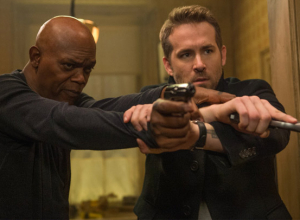
The Hitman's Bodyguard Movie Review
It really doesn't matter that this movie is utterly ridiculous, because the central pairing of...
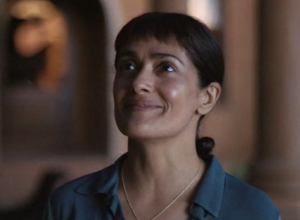
Beatriz At Dinner Trailer
Beatriz is a holistic healer trained in massage, reiki and other therapies who is invited...
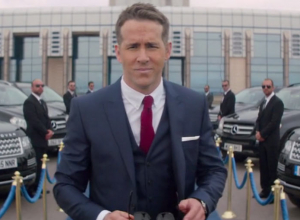
The Hitmans Bodyguard Trailer
An AAA-rated executive protection agent (Ryan Reynolds) is charged with protecting the most wanted hitman...
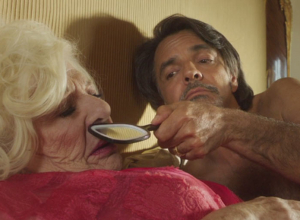
How To Be A Latin Lover Trailer
Ever since he was a little boy, Maximo has been interested in living the high...
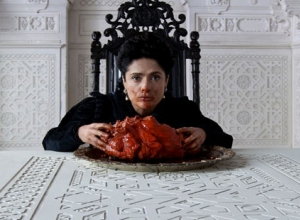
Tale Of Tales Trailer
Happily ever after wasn't always the way fairy tales turned out. Sometimes Princesses, Kings, Queens...
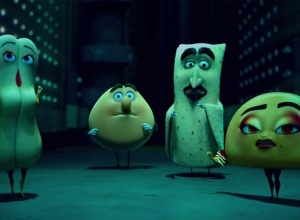
Sausage Party - Teaser Trailer
Frank is a hot dog Wiener who's packed into a vacuum seal bag with all...
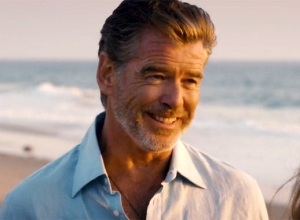
Lessons In Love Trailer
Richard Haig is a remarkably intelligent, charming, ageing poetry professor, whose life away from the...
Advertisement
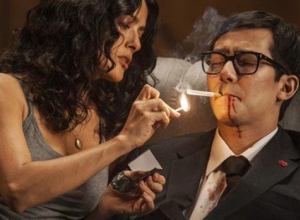
Everly Movie Review
A relentless onslaught of violent action, this movie is notable mainly because there's a woman...
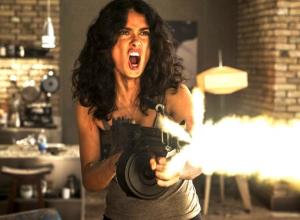
Everly Trailer
Everly is a skilled female assassin for her ruthless ex boyfriend Taiko's mob, but finds...

Muppets Most Wanted Movie Review
Where the 2011 reboot felt effortless in the way it recaptured that warmly anarchic Muppets...
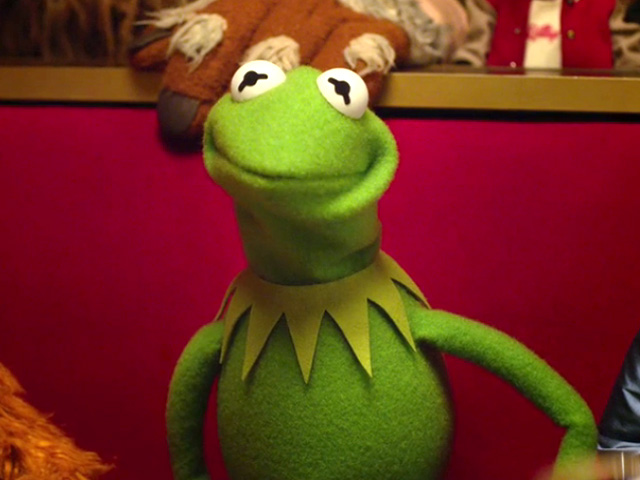
Muppets Most Wanted Trailer
Kermit and friends are set to go international with the help of their unfortunately named...
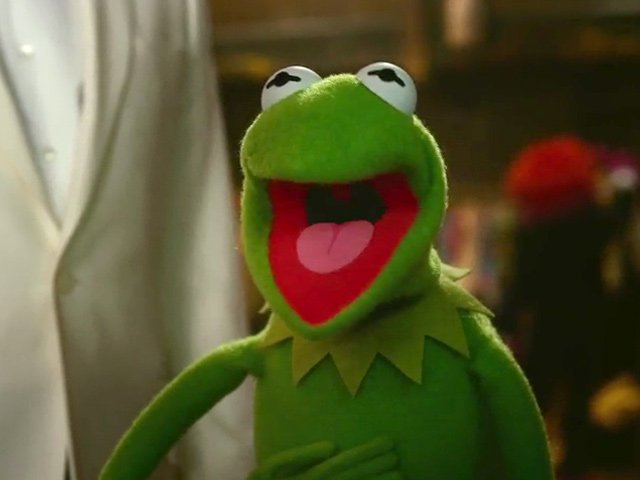
The Muppets Most Wanted Trailer
Kermit and friends return, embarking on an extensive world tour that sees them reach all...
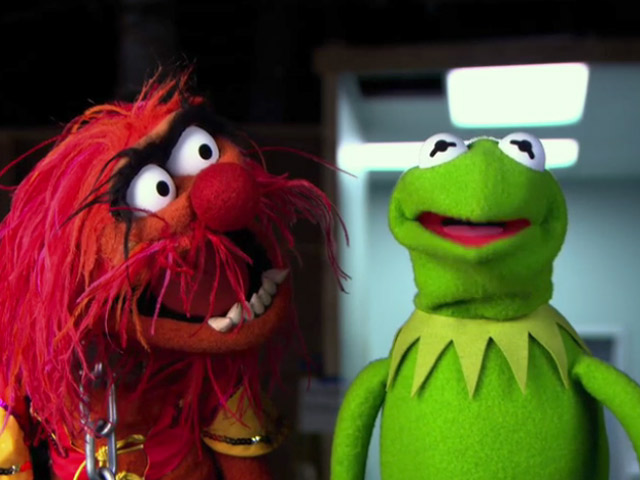
The Muppets Most Wanted Trailer
Kermit the Frog, Miss Piggy, Animal and friends are up to their usual tricks as...

Grown Ups 2 Movie Review
There was nothing remotely notable about 2010's Grown Ups, and now we have a sequel...
Advertisement
